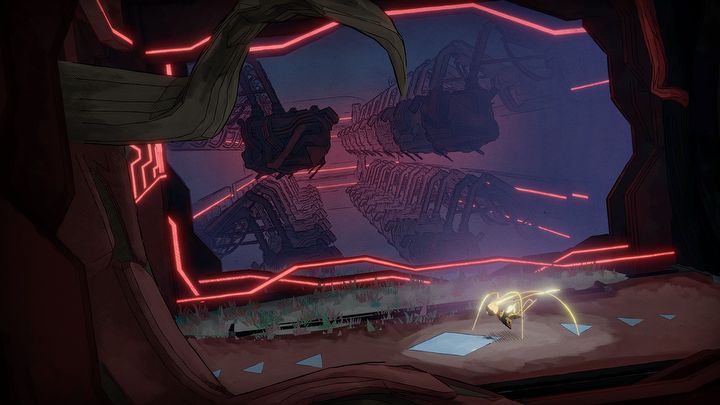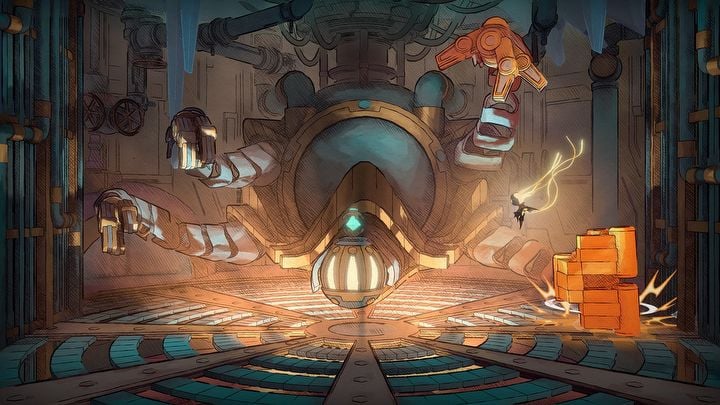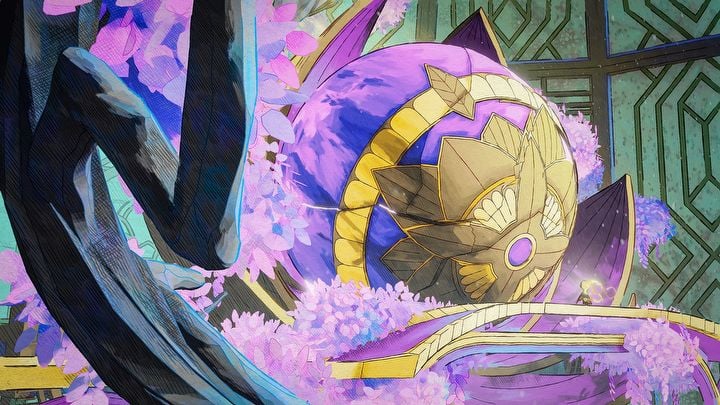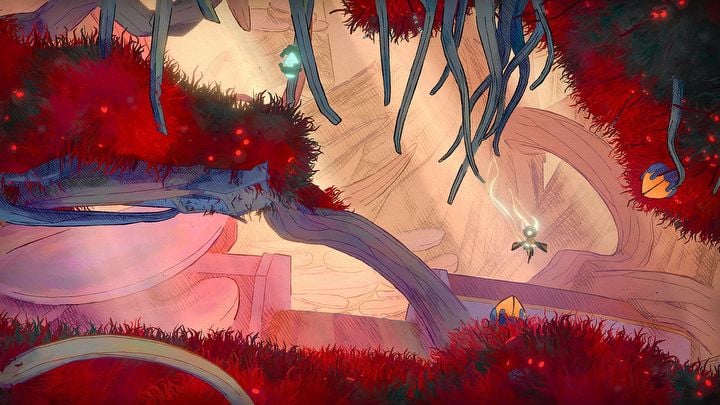"Most challenging was letting go of ideas we liked." Interview with the team behind MIO: Memories in Orbit
MIO: Memories in Orbit is one of the year's most anticipated indie Metroidvanias. Graphic novels, Hollow Knight, and a desire to do something different influenced the production of this sci-fi adventure.
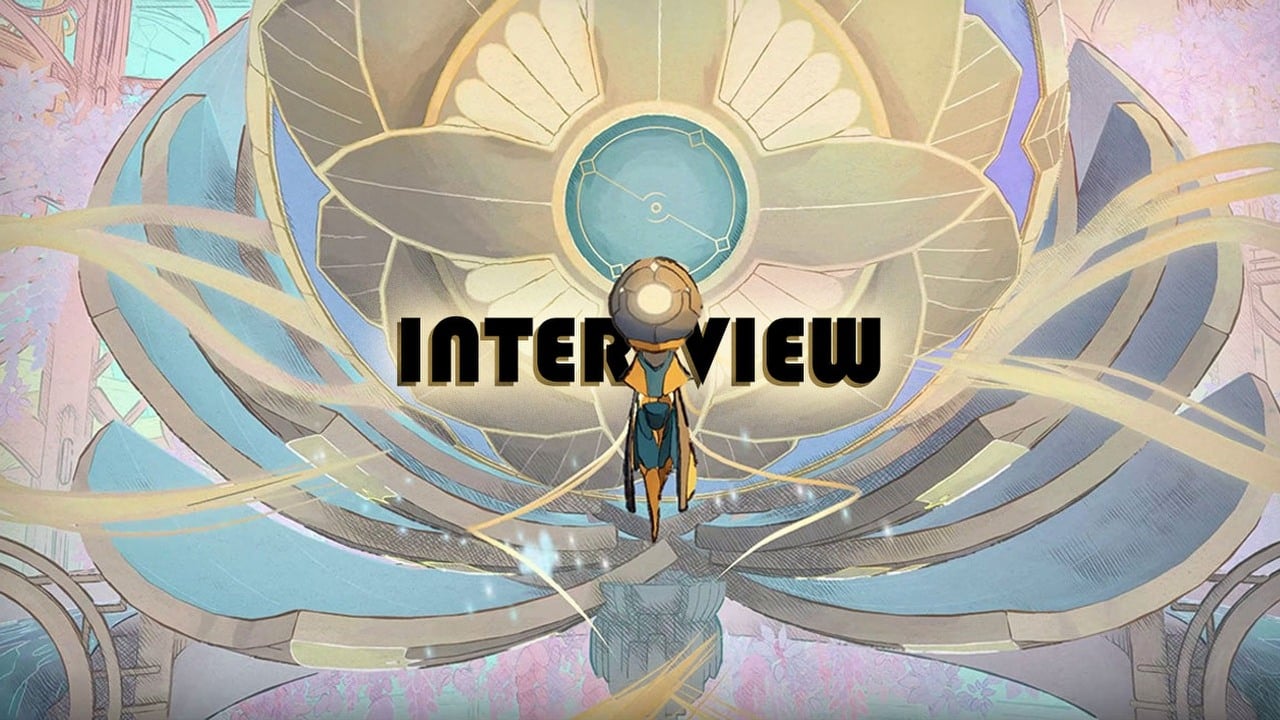
I had the opportunity to ask questions of the co-founder of Douze Dixiemes, the studio behind one of the most anticipated indie Metroidvania games currently, MIO: Memories in Orbit. I’ve played the demo, which is still available on Steam right now, and you can read Giancarlo Saldana’s more in-depth preview as well.
In MIO: Memories in Orbit, you play as a small, highly advanced android. Explore, the Vessel, “an enormous technological ark overgrown with machines gone rogue.” Fight challenging enemies in souls-inspired combat encounters, solve environmental puzzles, and learn the story of this unique world.
During my conversation with studio co-founder, Oscar Blumberg, we covered everything from MIO’s souls-like inspirations, graphic novel influences, that there are hidden secrets in the demo, and how the whole team playing Hollow Knight at the same time convinced them to make a Metroidvania. Remember, you can wishlist MIO: Memories in Orbit on Steam right now; the support goes a long way for a small studio. Without further ado, here’s my conversation with Douze Dixiemes’ Oscar Blumberg.
Matt Buckley: If you don’t mind, could you introduce yourself to our audience? Who are you? What is your role on the team? How did you get into game development?
Oscar Blumberg: Hi, I’m Oscar Blumberg. I’m one of the Douze Dixiemes’ cofounders, and on MIO I'm the Game Director and a programmer. We’re a small team, so most people do multiple things.
We were daydreaming about making a game studio for a while with a bunch of friends and ended up taking the plunge about 8 years ago now (I feel old).
None of us actually ever worked in the industry before that, so we can often be quite naive about things.
MB: When you start working on a game, what do you think of first? Do you know this will be a Metroidvania, and figure out the rest from there? Or do you have a story concept and eventually figure out what kind of gameplay will fit?
OB: For this game specifically, we knew it would be a sci-fi Metroidvania from the start, but that’s very vague, of course. When we were wrapping up Shady Part of Me, most of the team was playing Hollow Knight, and it was quite the revelation for us (as it was for many other people).
While the early stages are quite chaotic, we did start out with some basic gameplay prototypes and a super nebulous “world building.” Later on, we worked with people who actually know how to write to flesh it out, and of course, it ended up evolving quite a lot over the years.
I think the main drivers when we started up would be: the character (how she looks, how she moves), the outline of a setting, a place, and the emotions it should evoke, and the art style, funnily enough.
MB: With MIO, what would you say makes it different from the studio’s previous project, Shady Part of Me? Would you say MIO was more or less challenging to work on?
OB: Most early choices we made on MIO were actually reactions to how we felt after finishing Shady Part of Me. While we still love the game, it was really only made to be played once (or twice?). Players don’t mind, but working on it for years gets quite a bit stale, since it’s linear and you know every detail of it.
With that in mind, we set out to do the opposite: a very non-linear game with a super high skill ceiling. And it worked! I still enjoy playing the game after all this time, and in fact, we were competing for speedrun times a couple of weeks ago at the studio.
As for the development, we definitely underestimated how much harder it would be. We had to learn how to make large-scale level design, bosses, non-linear storytelling, etc.
It was also weird at first to “let go” and accept that large parts of the game (often the coolest) will never be seen by many players. In fact, there is something in the demo itself that I’m pretty sure most people will not find.
It was fun, but we made many mistakes along the way that we had to come back and fix later.
MB: Were there any games or other media that inspired MIO in some way? Other Metroidvanias you loved? Or maybe a sci-fi story that helped bring this vision to life?
OB: As far as other games, I think MIO wears its direct influences quite proudly. You can definitely find some Hollow Knight & Ori in there.
Less direct, but I think you can also feel Souls influence, not really in the gameplay but rather in how the world is built as one (hopefully) cohesive block, a lot of which is hidden, and with a lot of its history implied through environmental storytelling.
As far as how the game looks, since we aim for an illustrated style, we generally pick our references in “bande dessinée” (graphic novels). So, for example, Meurisse, Kerascoët, and Guarnido.
MB: Playing through the demo of MIO, I couldn’t help but notice how expressive so many of the NPCs are, especially Mel. What was it like designing the characters and making them expressive despite being robots?
OB: Glad to hear you liked Mel.
We definitely struggled with that for a while. The combination of the lack of faces, the camera that is quite far away for gameplay reasons, and the art style that tends to eat away small details…
In the end, I think it came down to finding the style that fits the universe of the game.
Owing to MIO’s “soft sci-fi” / sci-fantasy vibes, we can take a lot of liberties with what “a robot” is, both in terms of character design and animations.
As time went on, our art director and our animator started to exaggerate personalities more and more and find “tricks” to evoke expressions with other body parts and posture.
MB: Just from the first few hours, I can tell that there is a lot of lore players can dive into should they choose. What was it like coming up with this world? What was challenging? What did you enjoy working on?
OB: While the broad strokes of the world did not change much, a LOT of the story was written incrementally as we developed the game and figured out what worked and what did not. A lot of the story is not told explicitly, and since it’s an exploration game, what’s fun is to figure out things by understanding the places you visit, the objects you find, and what they mean for the world.
This meant that the story had to co-evolve with the level design, so that every place made some kind of sense, and conversely, that most important “past events” were always reflected in the world.
I guess that’s the part I found the most interesting, but I was not the one actually writing the story, so I guess you’d have to ask him.
MB: I appreciate that the early sections of the game don’t spend too much time showing the player text box tutorials. I remember the moment I figured out that I had a double jump and could attack, not because I was told, but because I had just pressed the buttons myself. How do you determine the optimal level of tutorialization for a game like MIO?
OB: Heh, well, actually, for those very early moments, there is a hint that pops up if you get stuck too long (which almost never happens). In a way, it’s an “invisible tutorial.”
However, for the rest of the game, there are many mechanics that are either not explained at all or only partially explained.
That’s mostly a taste thing, I think. We just like this in games, the fact that you have to be “on the lookout”, ask yourself questions, and experiment.
In all those cases, we’ve put hints in the world, though. It took a long time to tune, so that we strike a good balance where most people figure things out eventually, but it’s still a cool moment. It ended up being way more work than making a normal tutorial.
MB: What has been the most enjoyable part of development, and the most challenging?
OB: Well, speaking for myself, I think the most memorable part is to watch people playtesting. While it’s fun to work on the game, it’s more of a marathon, where things get slowly better day after day. Playtesting is like the finish line, so that’s what comes to mind, I guess.
Most challenging, I think, was letting go of ideas we liked. But the game has to come out eventually.
